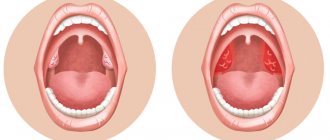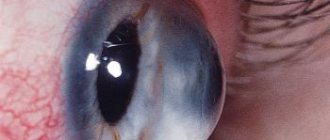Otosclerosis is a pathology associated with excessive tissue growth in the area between the middle and inner ear. This leads to a decrease in sensory perception and sound transmission, and can also cause disturbances in the functioning of the vestibular apparatus.
The Miracle Doctor clinic performs otosclerosis removal surgery under the guidance of qualified otolaryngologists, audiologists and audiologists using modern methods of conservative and surgical medicine.
Symptoms of otosclerosis
Diseases of the ear canal may have characteristic symptoms associated with impaired sensory acoustic perception, i.e. hearing:
- hearing loss – a gradual decrease in hearing, in which it becomes more difficult for the patient to understand male speech, while the person hears higher sounds (for example, women’s or children’s speech) normally;
- noise in the ear, reminiscent of the sound of a primus stove or the rustling of leaves (“white noise”);
- pain in the ear, especially during an exacerbation of the pathological process;
- dizziness is a rare but possible symptom of otosclerosis caused by damage to the vestibular apparatus.
Postoperative period
After the operation, the patient must lie on his back or on the side opposite the operated ear for 3 days. If modern titanium prostheses are used, this period can be shortened. Excessive strain, heavy lifting and strenuous exercise should be avoided for 3 weeks after surgery. Typically, within a week after surgery, patients notice improvement in hearing. The patient should not travel by plane for 2-3 weeks after surgery. It is necessary to avoid getting water into the ear canal for 1 month after surgery. Swimming is possible 1 month after surgery, but diving is not advisable. Any action associated with changes in air pressure (flying, climbing to high altitudes, diving) can lead to barotrauma of the cochlea and hearing loss.
Three weeks after surgery, you will be able to drive a car and fly an airplane.
Causes and predisposing factors to otosclerosis
Doctors name the main causes of the disease:
- heredity;
- infectious diseases, especially in people genetically predisposed to pathologies of the middle and inner ear;
- gender – up to 80% of cases of ear otosclerosis occur in women;
- endocrine factors, especially disorders of the thyroid and parathyroid glands;
- acoustic injuries, the consequences of long-term or short-term exposure to noise and loud sounds;
- chronic inflammation of the inner ear, such as otitis media;
- inflammatory process of the bone tissue of the middle ear (Paget's disease);
- disturbances in the blood supply to the inner ear, impeding the flow of arterial blood;
- occupational factors - prolonged exposure to noise, vibration and sounds at certain frequencies, which lead to a decrease in acoustic perception (for example, occupational hearing loss occurs among workers at airports, factories, etc.)
The pathology develops gradually, starting as one-sided, then becomes bilateral.
Before and After Results
Next, we present several tone threshold audiograms of patients before and after surgery.
Audiogram of the patient before surgery on the left ear. The right ear was operated on 7 months ago. The pure-tone threshold audiogram shows conductive hearing loss of the second degree in the left ear (WHO) with the presence of a Carhart wave.
Audiogram of the same patient 15 days after piston stepoplasty
Audiogram of the patient before surgery. The tone threshold audiogram shows conductive hearing loss of the first degree in the left ear, mixed hearing loss of the fourth degree in the right ear (WHO). The first to be operated on is the worse hearing ear – the right ear.
Audiogram of the same patient 12 days after piston stepoplasty on the right ear
Forms of the disease
There are several forms of otosclerosis:
- conductive - a violation of the conductivity of sound waves, amenable to surgical correction up to the restoration of hearing;
- mixed - not only the conduction function is disrupted, but also the auditory analyzer, and can be partially restored by acoustic perception;
- Cochlear otosclerosis is a complete loss of sound perception that cannot be corrected surgically.
The disease can develop at different rates - slowly, spasmodically and quickly.
2. Classification of types of otosclerosis
The classification of otosclerosis is based on the nature of disturbances in sound conduction or sound perception.
Conductive
otosclerosis is diagnosed when, with preserved bone, only air sound conduction suffers. This form has the most favorable prognosis with surgical treatment.
Cochlear
otosclerosis is characterized by dysfunction of bone conduction. With this form of otosclerosis, communication becomes significantly more difficult, since the patient suffers from significant tinnitus and perceives any spoken speech as unintelligible. Surgical treatment is often
turns out to be only a partial solution to the problem of difficult speech perception.
Mixed
otosclerosis is diagnosed when both bone and air conduction are impaired. The prognosis here depends on the ratio of these violations. The success of surgical intervention is limited by the severity of bone conduction.
Visit our Microsurgery page
Diagnosis of otosclerosis
Otosclerosis can easily be confused with other hearing diseases, so it is very important to seek help from a qualified specialist who can differentiate the disease using modern diagnostic methods. The Miracle Doctor clinic in Moscow uses modern diagnostic methods:
- Otoscopy is a physical examination of the ear using a special instrument (otoscope).
- Audiometry is a hardware measurement of hearing that allows you to determine the form and type of otosclerosis.
- Tomography or x-ray of the skull - allows you to examine the bony labyrinth and detect foci of ossification.
Registration for surgery
Operation at the expense of the budget
Surgical treatment of otosclerosis in accordance with Decree of the Government of the Russian Federation No. 1610 of December 7, 2019 (link) is included in Section II (the list of types of high-tech medical care not included in the basic compulsory medical insurance program, the financial support of which is provided through subsidies from the budget of the Federal Compulsory Medical Insurance Fund to federal government institutions ). Stapedoplasty surgery for otosclerosis can be performed free of charge for the patient by completing a package of documents with the ENT doctor at the place of residence (extract from medical records and referral for hospitalization) and then the health authority of the patient’s region of residence. OHC places a package of documents in the electronic subsystem for monitoring the implementation of the state task for the provision of high-tech medical care at the expense of the federal budget on the waiting list. The waiting time for VMP depends on the volumes allocated to the institution for the year by the Ministry of Health of the Russian Federation and the number of patients on the waiting list. Today, waiting times range from 1.5-2 years. Apply for a referral at the expense of the budget
VHI operation
In addition, surgical treatment of otosclerosis in our institute can be carried out at the expense of voluntary health insurance (VHI), non-cash payment by an organization, or at the expense of citizens’ personal funds.
When performing surgical intervention at the expense of VHI, the voluntary health insurance program must include elective surgery. When coordinating surgical treatment - stapedoplasty - with a medical insurance organization, it is necessary to take into account that the operation involves replacing the patient’s fixed auditory ossicle (stapes) with an auditory ossicle prosthesis, which is often not included in the insurance program. Sign up for VHI
Paid operation
The cost of surgical treatment of otosclerosis at our institute, which includes surgery under local anesthesia with the installation of a titanium K-piston prosthesis, an 8-day hospital stay with treatment, and a tone threshold audiogram before discharge, averages 135,000-155,000 rubles. The cost depends on the category of the ward in which the patient is accommodated (cost of stay in the ward).
Considering the existing waiting list for surgery on average for 1-2 months for nonresident patients, in order to optimize preoperative examination and subsequent surgical treatment (reducing the number of visits to St. Petersburg), it is possible to pre-register for surgery on the website of our institute (Registration).
In this case, the patient, in agreement with him, is pre-recorded on the operating list for a certain date (if you wish to be placed in a superior ward, you must also agree on its availability for your dates). 1 day before the expected date of surgery, the patient arrives at the institute for an in-person consultation, and if the indications for surgery are confirmed and there are no contraindications to surgery due to concomitant diseases, he is admitted to the clinic. At your place of residence, you will need to take tests in advance (list of tests).
Treatment of ear otosclerosis at the Miracle Doctor clinic
Drug treatment of otosclerosis is not carried out, because Conservative methods usually do not give results for this pathology. In most cases, it is impossible to restore hearing without surgery, but it is quite possible to improve the situation with the help of modern hearing aids.
But not every person is ready for surgery, especially since surgical intervention does not always guarantee a complete cure and does not prevent relapses of the disease. Hearing replacement is the best option for most patients, allowing them to restore their lost quality of life.
At the Miracle Doctor clinic, qualified audiologists select modern hearing aids for their patients, eliminating the inconveniences associated with hearing loss. Thanks to us, you will not only forget about the problem, but also get rid of many side effects of the disease, such as nervous tension, difficulties in socialization and other problems.
Make an appointment with specialists at the Miracle Doctor clinic today!
4. Treatment of the disease
Conservative treatment
otosclerosis is ineffective. It can only be aimed at stabilizing the level of hearing loss. If factors and conditions are known against which chronic otosclerosis worsens with further hearing loss, therapy can be aimed at controlling the general condition and reducing reactivity. This is, for example, special pregnancy management, neurological, endocrinological or immune therapy.
Surgical treatment methods show the greatest effectiveness:
- mobilization of the stapes;
- fenestration of the labyrinth;
- Stapedoplasty.
The first operation is usually performed on the ear with the worst hearing. If the results are positive, the second ear will be operated on no sooner than six months later. Surgical treatment stops the development of hearing loss and sometimes even improves hearing for several years. However, over time, hearing begins to decline again. If all available treatment methods are ineffective, hearing aids or the use of hearing aids are indicated, and, of course, one should not refuse such a solution for aesthetic reasons or because of popular prejudices (“The device reduces hearing even faster”). The priority in such situations is to ensure and maintain an acceptable quality of life, level of social adaptation and ability to work.
conclusions
The cochlear form of otosclerosis may cause sensorineural hearing loss in 1.5–20% of patients.
To reduce the risk of complications after stapedoplasty, the preoperative examination of patients with otosclerosis must include MSCT of the temporal bones (with a study step of 0.6–1 mm). When identifying the cochlear form of otosclerosis, it is advisable to conduct an MRI of the cochlea.
The choice of management tactics for patients with otosclerosis should depend on the form and stage of the otosclerotic process and the form of hearing loss. At the present stage of development of otosurgery, choosing the right tactics can help patients with any form of otosclerosis.
Introduction
Despite the fact that the main methods of surgical intervention were developed and introduced into clinical practice in the middle of the twentieth century, surgical treatment of otosclerosis remains an urgent problem of modern otorhinolaryngology.
The epidemiological prevalence of otosclerosis, according to several authors, is 5.67 patients per 100 thousand inhabitants [1]. Over the past decades, otosurgical interventions have been performed using modern operating microscopes, surgical lasers, Skeeter otological micro-drills and various instruments created using innovative technologies. In addition, stapes prostheses are constantly being improved, which allows the surgeon to select a prosthesis during surgery depending on the anatomy of the middle ear of a particular patient (different length, shape, diameter of the prosthetic leg). All this greatly facilitates the doctor’s work and makes it possible to achieve good functional results of the operation in patients who, 10 years ago, were denied help if they had an obliterating form of otosclerosis or an anomaly in the location of the facial nerve. However, according to domestic and foreign authors, the frequency of complications and unsatisfactory results of stapedoplasty remains quite high and ranges from 1.6 to 20% [2–4]. In our opinion, some of the unsuccessful outcomes of stapedoplasty may be associated with insufficient diagnosis of the cochlear form of otosclerosis, in which classical methods of surgical treatment may be ineffective.
Most otorhinolaryngologists in our country in their clinical practice use N.A.’s classification to determine the form of otosclerosis. Preobrazhensky. In this case, the form of otosclerosis is determined based on pure tone threshold audiometry (TPA) data, depending on the levels of bone conduction thresholds (BC). ON THE. Preobrazhensky in 1962 described tympanic, mixed and cochlear forms of otosclerosis. In this case, the tympanic form is characterized by CP thresholds in the speech frequency zone up to 20 dB, mixed form I - from 21 to 30 dB, mixed form II - >30 dB, cochlear form - >50 dB.
Read also
Vasomotor rhinitis
The concept of vasomotor rhinitis Vasomotor rhinitis is an inflammatory process in the nasal cavity.
Irritants or allergens can cause this inflammation. Sometimes there are cases when there is no specific reason... Read more
Otitis
What is otitis? Otitis is an ear disease in which inflammation develops, often with the formation of pus. It is provoked by infections that attack the body due to hypothermia, water getting into the ear or...
More details
Chronic laryngitis
Understanding Chronic Laryngitis Chronic laryngitis occurs when the larynx and its vocal cords become inflamed, swollen and irritated due to prolonged exposure to external factors. It's quite...
More details
Angina
When it comes to a sore throat, the first thing that comes to mind is a sore throat. However, let's figure out whether this is really so, what kind of disease it is and why all doctors recommend being so careful about it. Angina…
More details
Pharyngitis
What is pharyngitis? Pharyngitis is an inflammation of the pharynx, which is located at the back of the throat. Most often it is simply called “sore throat.” Pharyngitis can also cause a sore throat and difficulty...
More details
– Can you remember any funny case related to otosclerosis?
I had a patient who heard virtually nothing for 10 years. The stapedoplasty operation gave a good result, and the man left the hospital in a great mood. When, a month later, he came to me for a follow-up examination, and I asked if there were any complaints about hearing, he hesitated and answered: “Rather, on the contrary, doctor! A turtle has been living at home for a long time, but I could not even imagine how noisy this animal is! She scratches with her paws, eats loudly, shuffles her shell along the floor, and before I thought that a silent creature was walking next to me.”
Source:
information project “Moscow is the capital of health”
– How is the operation - stapedoplasty? How do patients tolerate the intervention?
The operation is considered microsurgical and high-tech. It is passed through a funnel under a microscope. The operation is performed under local anesthesia: we inject the ear into the ear canal - this is the only painful sensation. The surgical intervention lasts about 1 hour. Before the operation, we provide premedication: we administer sedatives and painkillers intravenously. As a rule, patients are half asleep after this. But after an operation under local anesthesia, a person can immediately evaluate the result: he suddenly begins to hear everything, which has enormous psychological significance for both the patient and the surgeon.







